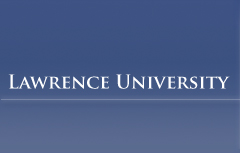Document Type
Honors Project
Publication Date
Spring 2010
Abstract
Rhinoviral infections are a major cause of asthma exacerbations, and though productive rhinovirus infection occurs predominantly in the bronchial epithelial cells of the upper airway, monocytic-lineage cells are implicated in establishing the inflammatory microenvironment observed during rhinoviral asthma exacerbation. It has remained unclear whether small G-protein activation plays a role in establishing this inflammatory microenvironment. The small molecular- weight G-proteins are known to be activated in a variety of cell types upon exposure to a range of viruses. However, it is unclear if small G-protein activation during viral exposure is a byproduct of receptor attachment, is important for viral replication, or is playing a role in mediating the inflammatory response. Human rhinovirus (HRV) is unique in that nearly genetically identical viruses bind the intercellular adhesion molecule (ICAM)-1 or low-density lipoprotein (LDL) receptors. Furthermore, HRV is capable of eliciting a signaling response in both epithelial cells, where productive HRV infection occurs, and in macrophages, where there is an immune response without productive infection. In this study, Rac, cell division cycle (cdc)42, and Ras were neither activated in epithelial cell lines nor capable of hindering viral replication. We demonstrated that the small G-protein Rac is differentially activated when major- and minor- group HRV bind to macrophage ICAM-1 or LDL receptors. Inhibition of Rac in macrophages attenuated the activation of the stress kinase p38 and the release of the proinflammatory cytokine MCP-1, but inhibition of Rac did not affect the release of the proinflammatory cytokine RANTES. Rac inhibition also upregulated the toll-like receptor TLR3 and interferon-α. These findings suggest that Rac is important in establishing the inflammatory microenvironment that is initiated in the human airway upon exposure to rhinovirus.
Level of Honors
summa cum laude
Department
Chemistry
Advisor
David J. Hall
Recommended Citation
Schreiber, Michael, "The role of the Ras superfamily small G-proteins in the proinflammatory environment of rhinovirus-exposed monocytic-lineage cells" (2010). Lawrence University Honors Projects. 51.
https://lux.lawrence.edu/luhp/51

Comments
Advisor: David J. Hall
Level of Honors: summa cum laude